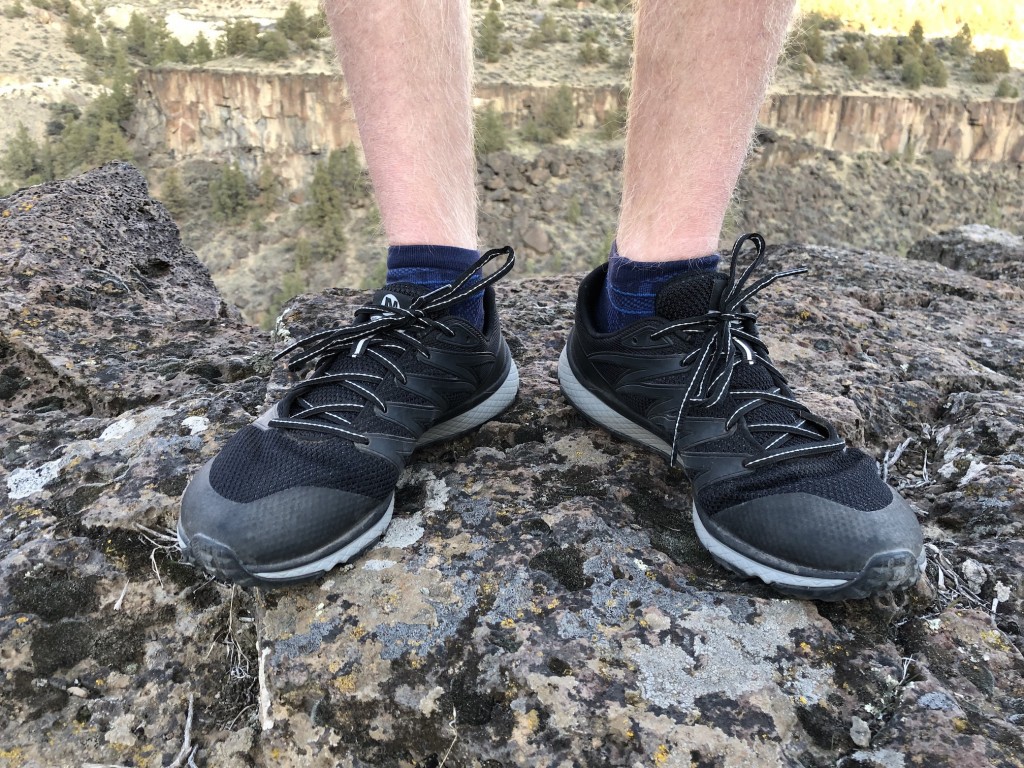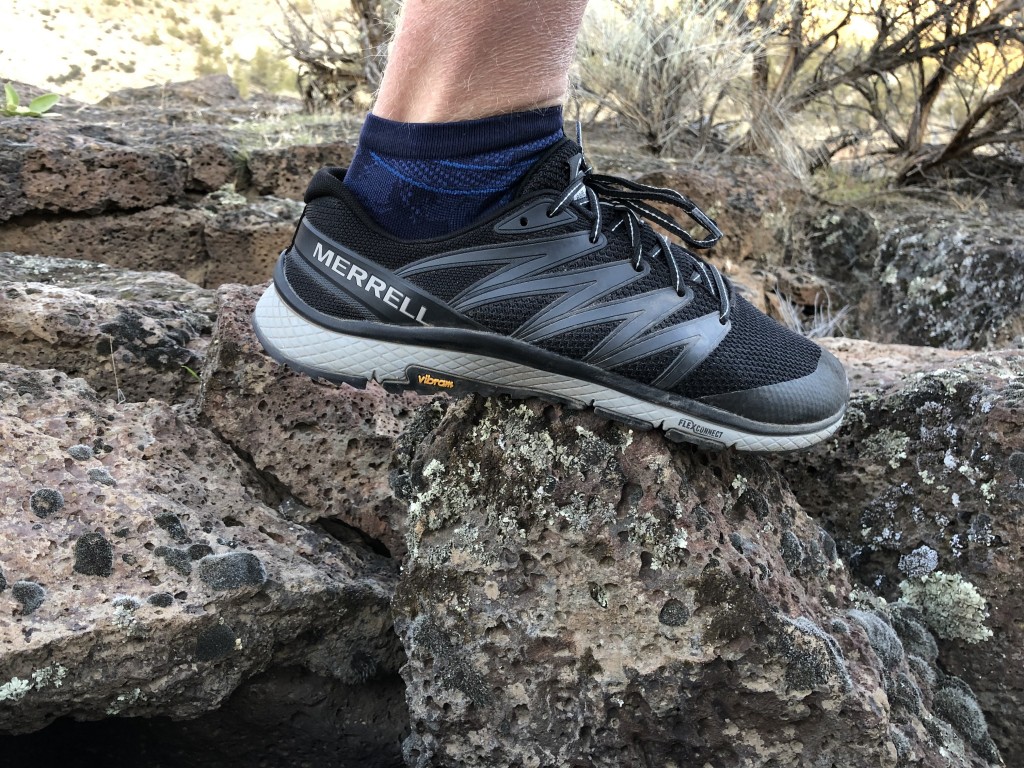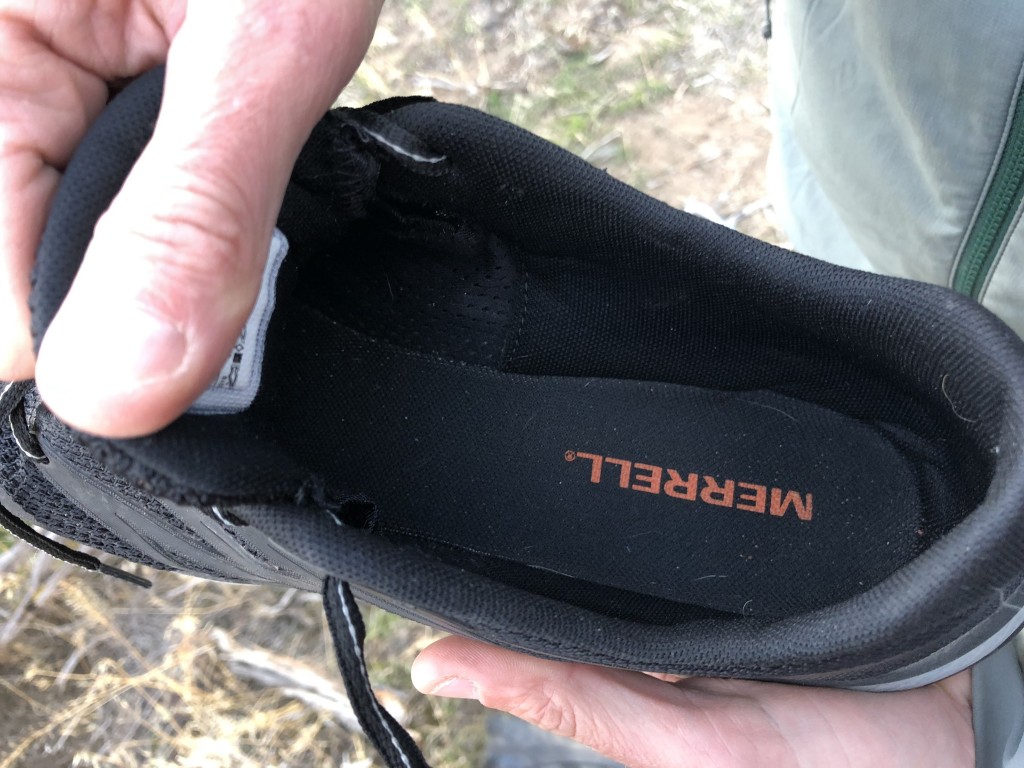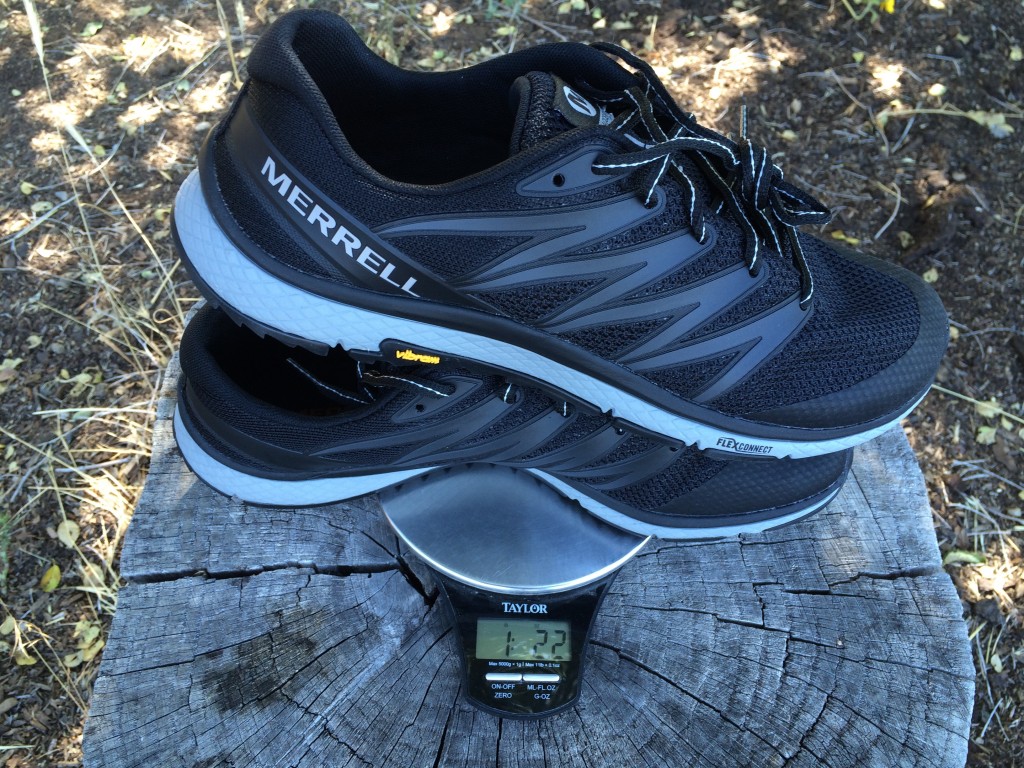Merrell Bare Access XTR Review
Our Verdict
Our Analysis and Test Results
Perhaps the best way to describe the Merrell Bare Access XTR is as a barefoot shoe that has been beefed up with a bit of extra cushioning underfoot to allow for slightly more aggressive running styles. In design and purpose, it is not terribly dissimilar from the Merrell Trail Glove 5, although it is still obviously a trail runner more than a barefoot shoe. This is very nearly the lightest trail runner in this review, but also comes with some of the least underfoot protection. For this reason, we find it to be better for shorter distances, training runs where form is more important than a fast cadence, and trails that are not overly rugged or buried in jagged rocks.
Environmentally conscious runners will also love these shoes because they are made vegan-friendly, with no animal by-products whatsoever. For a limited time, and a few extra dollars, you can also pick up the Sweeper edition, which is made of 100% post-race recycled products, something we have not ever seen in a trail running shoe before.
Performance Comparison
Foot Protection
If foot protection is of primary importance, then we would recommend another shoe to you. This shoe emphasizes sensitivity and proximity to the ground, although it does have a stack height of 17 mm that is made up primarily of dense foam. Compared to the squishy and springy foams common in Altra zero drop shoes, the foam here feels dense and firm, and yet still does a decent of protecting the bottom of the foot, and also doesn't suffer from packing out too quickly. Even with the firm foam, though, these shoes are light on underfoot protection.
It is the same story when it comes to the protection offered by the upper. Lightweight mesh comprises the majority, which is covered by some thin TPU overlays that add structure, but unfortunately do not adequately cover the most high wear areas, specifically the crease points in the forefoot of the shoe, which are prone to early and easy tears. The toe bumper is a light and thin TPU overlay with little in the way of impact absorbing ability. Due to its lack of protection, we were happiest running in this shoe on trails that didn't really require protecting from.
Traction
The lug pattern on the outsole of this shoe once again supports our opinion that it is optimal on mellower terrain. The numerous 3mm deep lugs are flattened off on the top in a ratio that seems close to 50/50 when considering lug space versus negative space. Looking at the Vibram rubber and lug pattern, one is reminded of the tread of a car tire, and the sticky tread grips well on smooth surfaces such as rock and dirt trails.
On the other hand, it does not grip as well on slippery surfaces such as mud and snow, or wet grass and loose dirt, due to the relatively short and non-aggressive design of the lug pattern. With this minimally aggressive tread pattern, this shoe is a good choice for crossover use, on both trails and pavement or dirt roads.
Sensitivity
There is no doubt that you will feel intimately connected to the trail while running in this shoe. The fact that it is so low to the ground with such a thin layer of cushioning ensures that you won't be able to bumble along, stomping on rocks as you go, but will enjoy scampering nimbly along the trail, placing your feet carefully as you do.
When compared to the level of underfoot protection, this shoe rests firmly on the most sensitive side of the scale. That said, some low to the ground, zero-drop shoes with softer and squishier foam underfoot do manage to allow even more pressure points to be felt by the foot. We think this shoe strikes the ideal balance and will be appreciated by those who like sensitivity in their shoes.
Stability
This is a very stable shoe, one of the main advantages of having a zero-drop platform that rides so low to the ground. On numerous trail runs, we found that this shoe has virtually no propensity for rolling over or twisting an ankle. Its 17mm stack height is right up there with the very lowest to the ground trail runners available.
We also found this shoe to have a very supportive arch and a snugger than normal fit, which means that the foot remains properly aligned within the shoe, and there is no slippage when one is running either across a side-hill or straight downhill. If you have fragile ankles and want to avoid running on a high-heeled, tipsy platform shoe, the Bare Access XTR is a fantastic choice.
Comfort
Compared to most trail running shoes, this one has a very different, and highly noticeable feel. Whether you choose to describe it as comfortable, or not, is a subjective affair. While our head tester didn't feel that this shoe was uncomfortable necessarily, it is also very presently noticeable on the foot at all times. The main culprit in imparting this sensation to the foot is the very high arch combined with a narrow fit through the midfoot. The arch is so pronounced that it feels as if it is designed to control inward pronation, although we find it a bit odd to assume that all runners will want this level of arch support. This narrowness persists toward the front of the shoe, up to the ball of the foot, which feels very snuggly held in place.
In contrast, we feel the heel is a bit wide and spacious, to the point where it is almost loose. Unfortunately, it feels as if the shape of the shoe will fit a very particular type of foot shape ideally but may exclude others who have a wider foot or flat arches. It was also among the lower half of competitors in our water test, meaning that it has a greater propensity to absorb water and retain it if it gets soaked. With these restrictions in mind, we chose to rate it lower than most of its competitors when considering comfort.
Weight
Our pair of men's size 11 US shoes weighed in at a mere 18.2 ounces on our independent scale, which is very light for a pair of trail running shoes. In fact, the only other pair of shoes that we have found to be lighter was not nearly as protective underfoot, so one could say that you are getting a great value in terms of protection for weight with this shoe.
Our experiences running and hiking in these shoes out on the trail backs up these findings, they are noticeably lighter than other shoes we usually run in.
Value
As one of the least expensive trail running shoes you can buy these days, we think these shoes present good value. While we didn't have the chance to wear them until they fell apart, and so can't comment definitively on their long term durability, it is worth noting that they are thin, light, and not overly protective on the upper, so sticking to mellower terrain will surely extend their lifespan, and thus increase the perception of value.
Conclusion
We recommend the Merrell Bare Access XTR because they are exceedingly affordable, in comparison to the zero drop shoe we like the best, which is not. They fall far more on the lightweight end of the spectrum and are very stable, low to the ground, and sensitive to what is underfoot.













